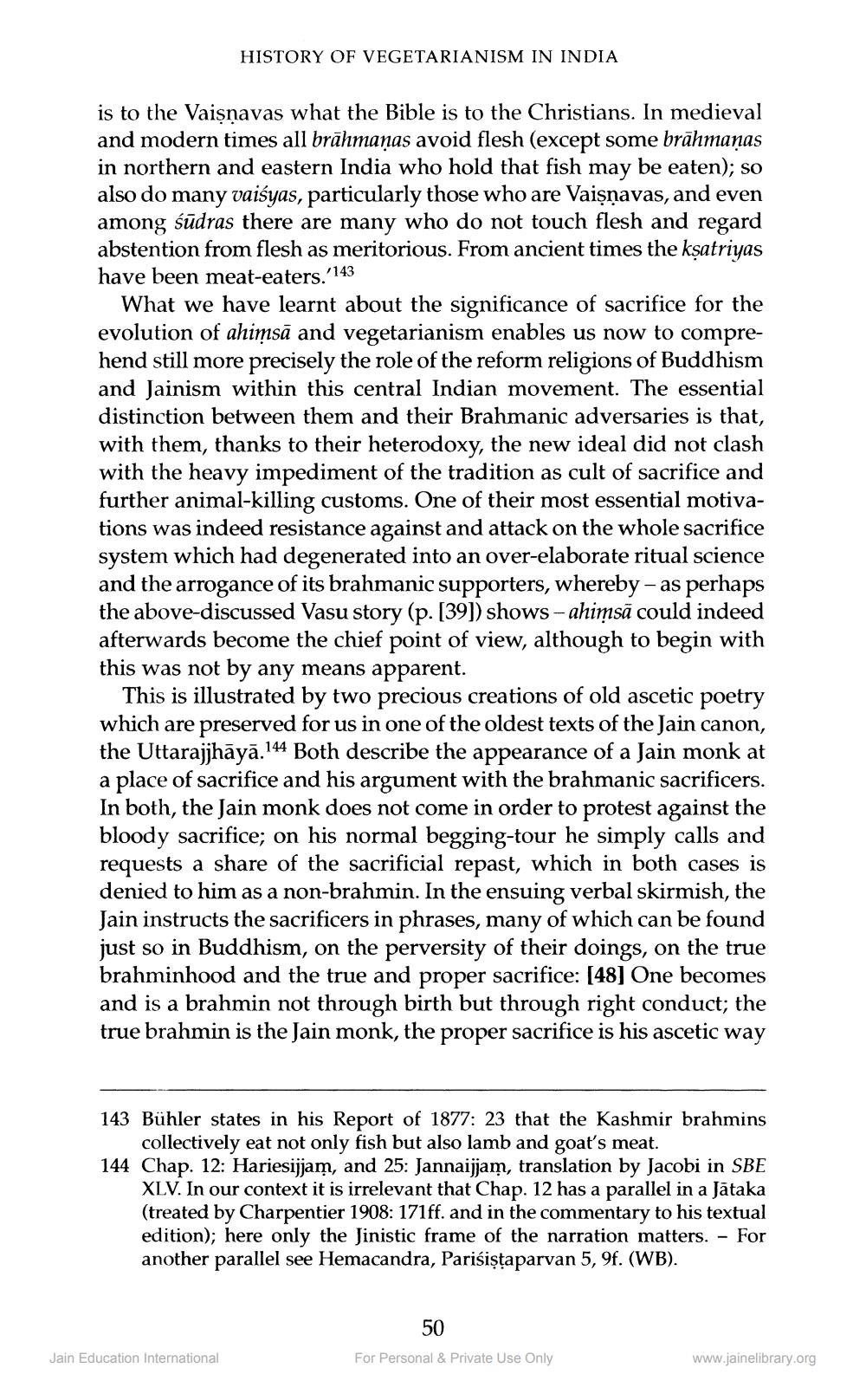________________
HISTORY OF VEGETARIANISM IN INDIA
is to the Vaisnavas what the Bible is to the Christians. In medieval and modern times all brāhmaṇas avoid flesh (except some brāhmaṇas in northern and eastern India who hold that fish may be eaten); so also do many vaisyas, particularly those who are Vaisnavas, and even among sūdras there are many who do not touch flesh and regard abstention from flesh as meritorious. From ancient times the kșatriyas have been meat-eaters. '143
What we have learnt about the significance of sacrifice for the evolution of ahimsā and vegetarianism enables us now to comprehend still more precisely the role of the reform religions of Buddhism and Jainism within this central Indian movement. The essential distinction between them and their Brahmanic adversaries is that, with them, thanks to their heterodoxy, the new ideal did not clash with the heavy impediment of the tradition as cult of sacrifice and further animal-killing customs. One of their most essential motivations was indeed resistance against and attack on the whole sacrifice system which had degenerated into an over-elaborate ritual science and the arrogance of its brahmanic supporters, whereby - as perhaps the above-discussed Vasu story (p. [39]) shows - ahimsā could indeed afterwards become the chief point of view, although to begin with this was not by any means apparent.
This is illustrated by two precious creations of old ascetic poetry which are preserved for us in one of the oldest texts of the Jain canon, the Uttarajjhāyā.144 Both describe the appearance of a Jain monk at a place of sacrifice and his argument with the brahmanic sacrificers. In both, the Jain monk does not come in order to protest against the bloody sacrifice; on his normal begging-tour he simply calls and requests a share of the sacrificial repast, which in both cases is denied to him as a non-brahmin. In the ensuing verbal skirmish, the Jain instructs the sacrificers in phrases, many of which can be found just so in Buddhism, on the perversity of their doings, on the true brahminhood and the true and proper sacrifice: [48] One becomes and is a brahmin not through birth but through right conduct; the true brahmin is the Jain monk, the proper sacrifice is his ascetic way
143 Bühler states in his Report of 1877: 23 that the Kashmir brahmins
collectively eat not only fish but also lamb and goat's meat. 144 Chap. 12: Hariesijjam, and 25: Jannaijjam, translation by Jacobi in SBE
XLV. In our context it is irrelevant that Chap. 12 has a parallel in a Jātaka (treated by Charpentier 1908: 171ff. and in the commentary to his textual edition); here only the Jinistic frame of the narration matters. - For another parallel see Hemacandra, Parisiştaparvan 5, 9f. (WB).
50
Jain Education International
For Personal & Private Use Only
www.jainelibrary.org




